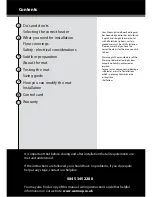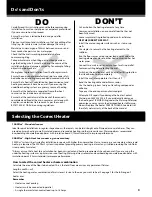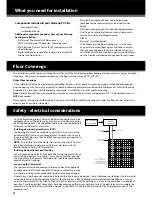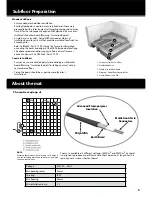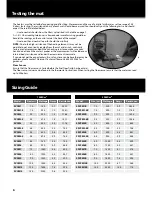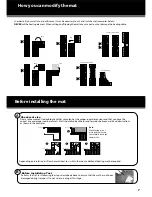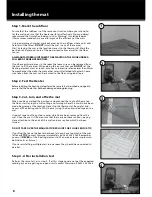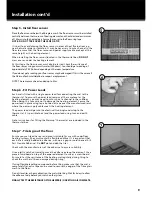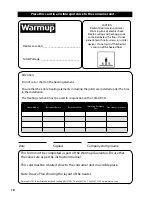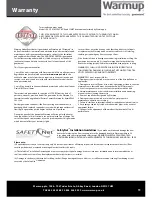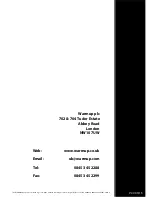
Carefully read this instruction manual before commencing
installation. Consult our helpline or a competent professional
if you are unsure how to proceed.
Ensure the system is tested before, during and after
installation.
Plan your mat layout and installation so that any drilling after
tiling (e.g. for sanitary ware) will not damage the wiring.
Maintain a minimum gap of 50mm between wire runs and
from conductive parts such as water pipes.
Check that the mat is working immediately before
commencing tiling.
Take particular care when tiling not to dislodge or dam-
age the heating wire. Ensure that during the course of the
installation that no damage is caused by, for example, falling
objects, sharp objects etc.
Wear gloves to prevent irritation from the fibreglass mesh.
Ensure the end cap and manufactured joint are under a full
bed adhesive or levelling compound and covered with a tile.
Ensure that a heat loss calculation has been carried out and
heating requirements have been met if you are using the
underfloor heating system as a primary source of heating.
Ensure that the heaters are separated from other heat
sources such as luminaires and chimneys.
Ensure that the control card at the back of the manual is
completed and fixed at the main consumer unit along with
any plans and electrical test records. As per the current
BS7671:2008 17th Edition wiring regulations.
Cut or shorten the heating element at any time.
Commence installation on a concrete floor that has not
been fully cured.
Leave surplus matting rolled up under units or fixtures -
USE THE CORRECT SIZE MAT.
Install the mat on irregular surfaces such as stairs or up
walls.
Use staples to secure the the heating element to the
subfloor.
Run the floor sensor wire or power lead over or under the
heating element or close to other heat sources such as hot
water pipes.
Connect two mats in series, only connect mats in parallel.
Commence tiling before testing the mat.
Switch on the installed mat until 8 days after fitting to allow
the tile adhesive to dry completely.
Install the mat in temperatures less than +5°C.
Bend the heating cable under 25mm radius.
Use the heating system to dry out levelling compound or
adhesive.
Tape over the end cap or manufactured joint.
Attempt a DIY repair if you damage the heater. Contact
Warmup on 0845 345 2288. If you accidentally damage a
the heating mat BEFORE tiling,under the Warmup Safetynet
guarantee you may return the damaged heater to Warmup,
who will replace the heater FREE OF CHARGE. See details of
the safety net warranty at the back of the manual.
DO
DON’T
Do’s and Don’ts
3
150W/m
2
-
Standard rooms
Ideal for quick installations in regular-shaped rooms, these mats can be laid straight onto Plywood or concrete bases. They can
provide primary heating in well insulated areas and secondary heating in other circumstances. Warmup always recommend
overboarding concrete/wooden bases with insulation boards (10mm standard) to improve performance.
200W/m
2
-
High Heat Loss rooms e.g. conservatory
200W/m² system is best suited for installation in rooms with higher than normal heat-loss or areas e.g. a conservatory where rapid
heat-up is required. The 200W/m2 system is capable of providing primary heating in almost any situation providing the sub-floor
is reasonably *insulated.
*Always ensure that a heat loss calculation has been carried out and heating requirements have been met if you are using the
undertile heating system as a primary source of heating. Warmup always recommend overboarding concrete/wooden bases with
insulation boards (10mm standard) to improve performance.
How to select the correct heater or heater combination
Calculate the area of the floor to be heated. This is the total floor area minus any permanent fixtures.
Length x width = m2
Select the heating mat or combination of mats closest in size to the area you want to heat. See page 7 for the full range of
heater sizes.
Remember
• Heaters cannot overlap
• Heaters must be connected in parallel
• A single thermostat can control loads up to 16 Amps.
Selecting the Correct Heater


